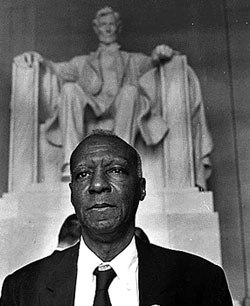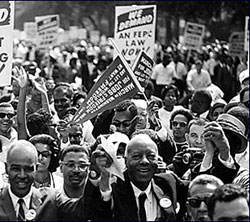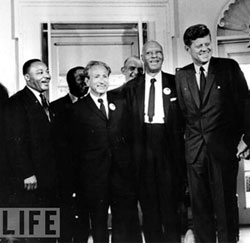Asa Philip Randolph was born in Crescent City, Florida, on 15th April, 1889. The son of a Methodist minister, he was educated locally before moving to New York where he studied economics and philosophy at the City College.
While in New York he worked as an elevator operator, a porter and a waiter. In 1917 Randolph founded a magazine, The Messenger (later the Black Worker), which campaigned for black civil rights. During the First World War he was arrested for breaking the Espionage Act. It was claimed that Randolph and his co-editor, Chandler Owen was guilty of treason after opposing African Americans joining the army. After the war Randolph lectured at the Rand School of Social Science. A member of the Socialist Party, Randolph made several unsuccessful attempts to be elected to political office in New York. He was was involved in organizing black workers in laundries, clothes factories and cinemas and in 1929 became president of the Brotherhood of Sleeping Car Porters (BSCP). Over the next few years he built it into the first successful black trade union.
The BSCP were members of the American Federation of Labor (AFL) but in protest against its failure to fight discrimination in its ranks, Randolph took his union into the Congress of Industrial Organizations (CIO).
After threatening to organize a March on Washington in June, 1941, Franklin D. Roosevelt issued Executive Order 8802 on 25th June, 1941, barring discrimination in defense industries and federal bureaus (the Fair Employment Act).
After the Second World War Randolph led a campaign in favour of racial equality in the military. This resulted in Harry S. Truman issuing executive order 9981 on 26th July, 1948, banning segregation in the armed forces.
When the AFL merged with the CIO, Randolph became vice president of the new organization. He also became president of the Negro American Labor Council (1960-66).
In 1963 Randolph began involved in what became known as the March on Washington for Jobs and Freedom. It was a great success and estimates on the size of the crowd varied from between 250,000 to 400,000. Speakers along with Randolph included Martin Luther King (SCLC), Floyd McKissick (CORE), John Lewis (SNCC), Roy Wilkins (NAACP), Witney Young (National Urban League) and Walter Reuther (AFL-CIO). King was the final speaker and made his famous I Have a Dream speech.
In his final years Randolph worked closely with Bayard Rustin in the AFL-CIO funded, Philip Randolph Institute, that was established in 1966. Philip Randolph died in New York on 16th May, 1979. |



